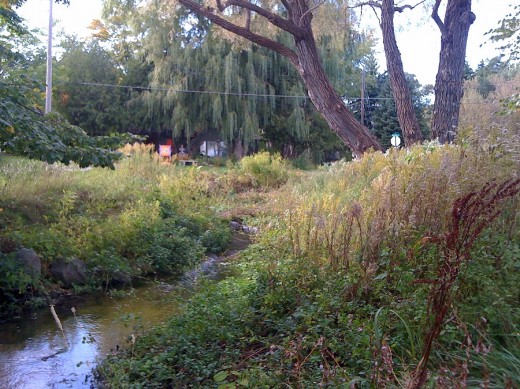Read the start of this article below; to view full article you need to be a PlannersWeb member. Already a member? — be sure you’re logged-in. Not a member? Consider joining the PlannersWeb.
Part II: An Overview of Some Basic LID Practices
The primary purpose of LID (Low Impact Development) is to prevent harm to streams, lakes, wetlands and other natural aquatic systems from nonpoint source pollution. LID is typically applied at the parcel and subdivision scale and emphasizes conservation and use of on-site natural features integrated with engineered, small-scale hydrologic controls to more closely mimic pre-development hydrology. Ideally, LID is a component of a community’s development ordinances and is applied throughout a watershed.

This is a completely different approach than conventional stormwater management, which treats stormwater as a by-product for disposal using costly end-of-pipe technologies.
LID techniques address precipitation first as a water resource. Many of the LID techniques focus on capturing stormwater for irrigation use on a site (retention or detention). This not only supports landscaping, but helps recharge groundwater. Other techniques slow and filter stormwater so that when it enters a stream or river, it does not carry with it the high concentrations of urban pollution that degrade the river or lake’s water quality.
LID Integrated Management Practices (IMPs) are often small, cost-effective landscape features located at the lot level. IMPs can be developed using open space, rooftops, streetscapes, parking lots, sidewalks, and medians. They can be applied equally well to new development, urban retrofits, and redevelopment / revitalization projects. The most common IMPs you may be familiar with are rainwater harvesting (rain barrels and cisterns), bioretention (bioswales and rain gardens), permeable pavement, green roofs, green parking lots, and streamside buffers.
A streamside buffer of undisturbed native vegetation helps to slow the flow of stormwater, as well as remove nonpoint source pollutants that degrade streams, rivers, and lakes.

End of excerpt
You must be logged in or a PlannersWeb member to read the rest of the article.